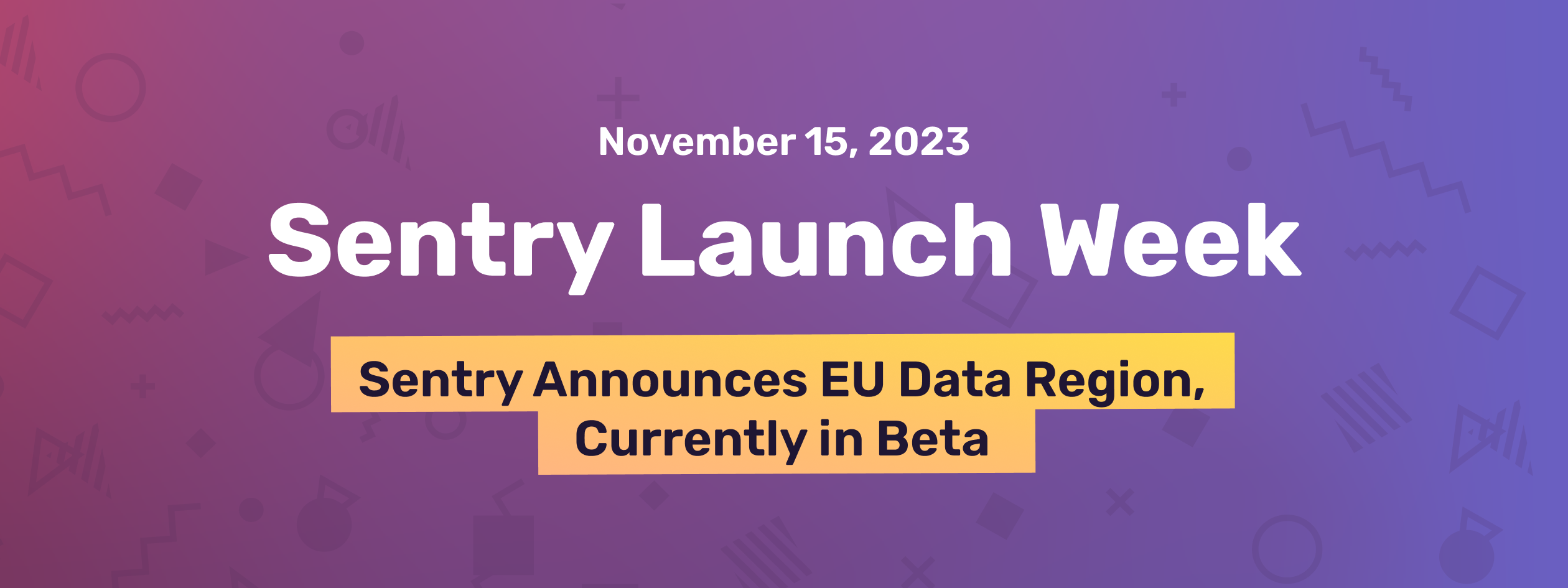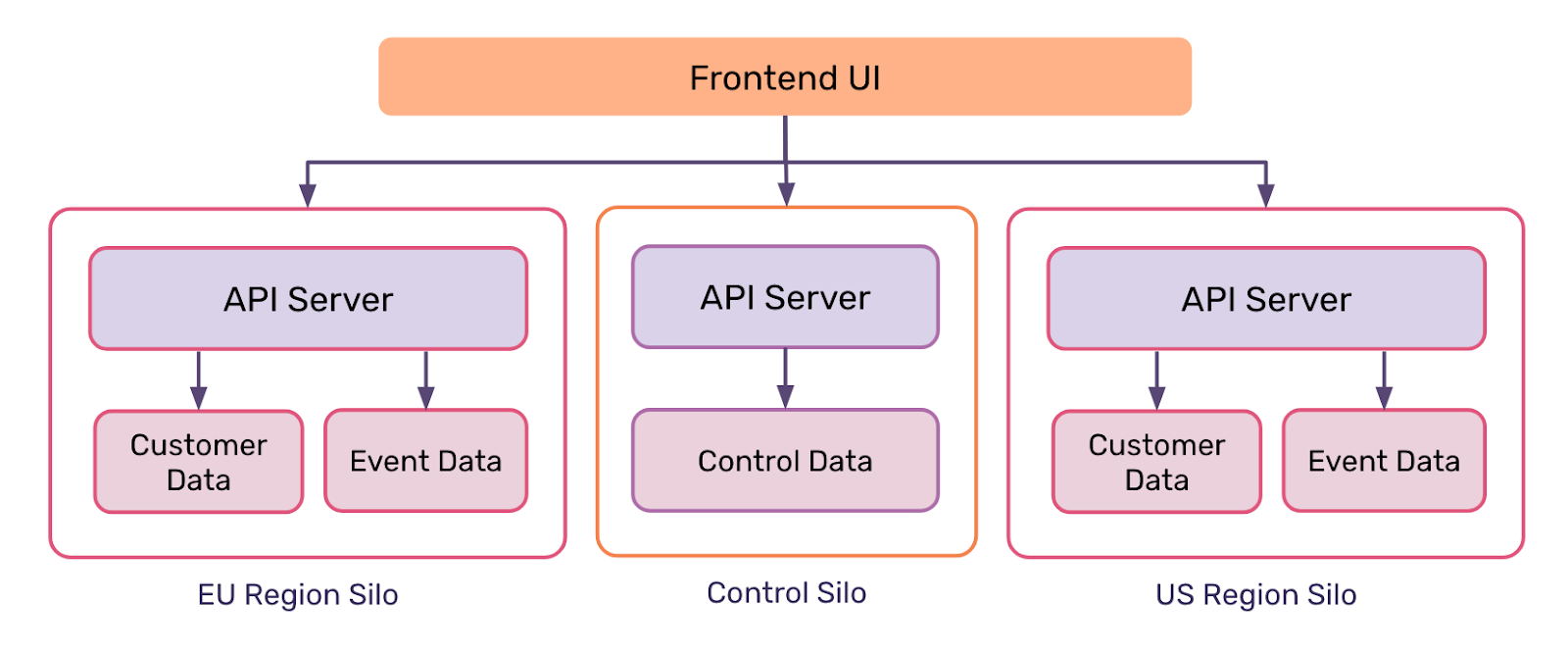Sentry’s EU Data Region Now in Early Access
Sentry’s EU Data Region Now in Early Access
Like many of our customers, Sentry takes privacy and data sovereignty seriously. One of Sentry’s values is to be for “Every Developer,” and we can’t do that with a US-only data solution.
That’s why, starting next month all Sentry organizations will be able to choose where their Sentry data is hosted – either in the US or the EU. This gives you the flexibility and control you need to implement the data strategy that makes the most sense for your business.
TLDR; EU data residency is coming early next 2024. Join the waitlist for early access.
While enabling our customers to choose European storage for their data was our end goal, we also wanted to make this user experience as seamless as possible by enabling you to access organizations in either region using the same Sentry login.

The dropdown in the Sentry organization creation flow that determines where your customer data is stored.
In this post, we’ll talk more about this user experience and why it matters, how we implemented data residency to make that experience possible, and how you can get started. You can get the full behind-the-scenes of how we built this on our engineering blog.
Multi-region sign-ins are usually painful
It would’ve been easy to deploy a completely disjointed instance of Sentry in the EU. But this would have been a terrible user experience for many customers.
You’ve probably experienced this bad UX before with other products. The one where every time you want to log in, you have to tell them your email address or the name of your organization first, and then they send you a link to the right URL where you can actually log in.
Since half of Sentry users are part of multiple Sentry organizations, and now those organizations can also be in different data centers, we knew we had to do better.
An architecture that optimizes for UX and privacy
First, some context.
Sentry is a monolithic Python Django application deployed in several form factors: web servers, Kafka consumers, Celery workers, etc. The application is backed by several PostgreSQL and Redis clusters, Google Cloud Storage, Snuba and Clickhouse clusters, and a bunch of other services like Relay and Symbolicator that are associated with our processing pipeline.
To build a seamless experience, we had to articulate a clear difference between Sentry’s user data (its users) and Sentry’s customers’ data (event data). Customer event data must never leave the region it was sent to, but Sentry user data has to be reachable everywhere or global sign-ins aren’t possible.
Keep ‘em separated: control and data silos
Given those constraints, we began by introducing the concept of “silos”. A single “control silo” contains globally unique data, whereas “region silos” contain Sentry’s customer’s data.
The control silo holds globally unique information like organization data, user accounts, slugs, and integration configuration. The region silos contain all of an organization’s events, projects, and other customer-specific information.
This is where the user experience magic happens. Your browser connects to the silo it needs, depending on the operation it’s trying to perform. For example, when signing in, it connects to the global control silo. When loading dashboards with event data, it will connect directly to the appropriate region silo.
We feel that this control and silo architecture achieves our goals of maintaining a great UX while ensuring customers’ event data never leaves its designated region.
To learn more about our data model, read this post.
Hosted securely in Frankfurt
Our new data center (and data silo) is located in the sehr schöne city of Frankfurt, Germany. This region will soon be available to customers on all of our plans – including free developer plans.
Customer telemetry data – errors, transactions, profiles, replays, etc – are always stored within the region you select when creating your organization. So you can feel confident that if you create an organization in our EU region, your data isn’t leaving Frankfurt.
While we’re longtime Sentry users, our company has taken a European-centric stance, working only with companies based in Europe or with data locality options to ensure protection of our customer's data. With Sentry’s new EU data region, we’re excited we can keep using Sentry to continue to improve our software quality, customer satisfaction, and developer velocity.
Raphael Slinckx, CTO at Elium
Cool, how do I get started?
Join the waitlist for early access. We’ll notify you when it’s your turn to get started. Once in Early Access, you’ll be able to use the normal Create New Organization flow to set up a new organization based in the EU. If you hate lines, we plan to be generally available in December 2023.
For customers who want to keep their existing organizations, we are working on migration tools that we will announce early next year. This will allow customers to move organizations between regions or even from self-hosted into any SAAS region.
In the meantime, reach out on Twitter, Discord, or join the discussion on GitHub to get your questions answered. And be sure to Tune in for two more days of exciting product announcements with Sentry Launch Week.





